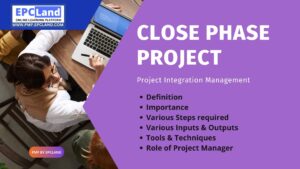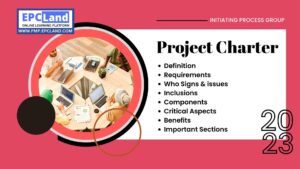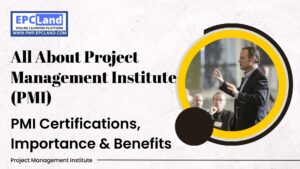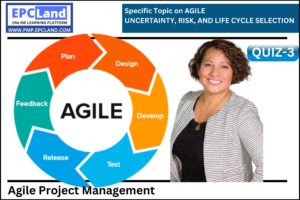Table of Contents
ToggleWhat is direct & Manage project work process in project integration management?
The “Direct and Manage Project Work” process in project integration management is the process of leading and performing the day-to-day management of the project work. This process involves coordinating the work of the project team, monitoring progress and performance, and making adjustments as needed to keep the project on track. The key outputs of this process are the deliverables produced by the project team, which are then used as inputs to the next process in the project integration management process group.
The steps for the Direct and Manage Project Work process include:
- Assigning tasks and responsibilities to project team members
- Managing and monitoring the progress of project work
- Identifying and resolving issues and conflicts
- Managing project changes
- Communicating project progress to stakeholders
- Managing and controlling project work
- Ensuring quality control of deliverables
The inputs for this process include project charter, project management plan, project documents, and performance reports. The tools and techniques used in this process include expert judgment, project management software, and meetings.
The outputs of this process are the deliverables produced by the project team and the performance reports that track the progress of the project. These outputs are used as inputs for the next process in the project integration management process group.
Attempt Quiz-1 on Direct and Manage Project Work

Time's up
Role of project manager in Direct and Manage Project Work
The role of the project manager in the “Direct and Manage Project Work” process is to lead and oversee the day-to-day management of the project work. The project manager is responsible for coordinating the work of the project team, monitoring progress and performance, and making adjustments as needed to keep the project on track.
The specific responsibilities of the project manager in this process include:
- Assigning tasks and responsibilities to project team members
- Managing and monitoring the progress of project work
- Identifying and resolving issues and conflicts
- Managing project changes
- Communicating project progress to stakeholders
- Managing and controlling project work
- Ensuring quality control of deliverables
The project manager also plays a critical role in ensuring that the project is aligned with the project charter and project management plan, and that the project is delivered on time, within budget, and to the satisfaction of the stakeholders. Additionally, the project manager is accountable for the overall success of the project, and must make decisions that balance competing demands such as scope, time, cost, and quality.
The project manager is the main point of contact between the project team and stakeholders and they must have strong leadership, problem-solving, and communication skills to effectively manage and direct the project work.
Tools & Techniques for Direct and Manage Project Work
There are several tools and techniques that can be used to support the “Direct and Manage Project Work” process in project integration management. These include:
- Project management software: This type of software can be used to track progress, manage tasks and resources, and communicate with the project team. Some examples include Microsoft Project, Trello, and Asana.
- Meetings: Regular meetings, such as daily stand-up meetings, weekly team meetings, and monthly project review meetings, can be used to discuss progress, identify and resolve issues, and make decisions about the project.
- Earned Value Analysis (EVA): This is a technique that can be used to measure the progress of the project and compare it to the project plan. It helps in measuring the performance of the project by comparing the planned and actual values of the project.
- Change control: This technique can be used to manage and control changes to the project scope, schedule, and budget. This includes the process of identifying, evaluating, and approving or rejecting changes to the project.
- Issue and Risk Management: This technique is used to identify, assess and prioritize issues and risks that may impact the project and develop strategies to mitigate or manage them.
- Quality Control: This technique is used to ensure that project deliverables meet the specified quality standards and requirements. It includes inspection, testing, and audits to ensure that the deliverables are of high quality.
- Communication: This technique is used to ensure effective communication between the project team, stakeholders and other project-related parties.
The combination of these tools and techniques can be used to effectively direct and manage project work and ensure that the project is completed on time, within budget, and to the satisfaction of the stakeholders.
Inputs & outputs of Direct and Manage Project Work
The inputs and outputs of the “Direct and Manage Project Work” process in project integration management are:
Inputs for Direct and Manage Project work Process
- Project management plan: This document provides guidance on how the project will be executed, monitored, and controlled, and serves as the basis for directing and managing the project work.
- Project charter: This document provides a high-level overview of the project, including the project objectives, stakeholders, and success criteria.
- Work performance data: This includes data on the progress of the project work, such as task completion status, resource utilization, and quality metrics.
- Organizational process assets: These include the policies, procedures, and guidelines that the organization has in place for managing projects.
- Approved change requests: These are changes that have been approved through the change control process and need to be incorporated into the project work.
- Issue and risk management plan: This plan provides guidance on how issues and risks will be identified, assessed, and managed throughout the project.
Outputs from Direct and Manage Project work Process
- Deliverables: These are the tangible products, services, or results that are produced by the project team as part of the project work.
- Work performance information: This includes data on the progress of the project work, such as task completion status, resource utilization, and quality metrics.
- Change requests: These are changes that have been identified during the project work that need to be evaluated and approved or rejected through the change control process.
- Project management plan updates: Any changes to the project management plan that are made as a result of directing and managing the project work.
- Project documents updates: Any changes to project documents, such as the project charter, as a result of directing and managing the project work.
- Organizational process assets updates: Any updates to the policies, procedures, and guidelines for managing projects that result from directing and managing the project work.
- Project records : All the important information, documents, and data that are generated during the project is kept in project records.
Attempt Quiz-2 on Direct and Manage Project Work

Time's up
Final Take Away from Direct and Manage Project work Process
The outputs of the “Direct and Manage Project Work” process will be used as inputs for other processes in the project integration management knowledge area, such as “Monitor and Control Project Work” and “Perform Integrated Change Control”.
FAQs on "Direct and Manage Project Work" in Project Integration Management
What is “Direct and Manage Project Work”?
It is a process in project integration management that involves overseeing and executing the work defined in the project management plan.
What is the purpose of this process?
The purpose is to ensure that the project work is completed according to the project plan and that project objectives are met.
Who is responsible for this process?
The project manager is responsible for directing and managing the project work.
What are the inputs for this process?
The inputs for this process include the project management plan, project charter, agreement, and other related documents.
What are the outputs of this process?
The outputs of this process include the completed project deliverables, project management plan updates, and performance reports.
How is this process different from “Monitor and Control Project Work”?
The “Direct and Manage Project Work” process focuses on executing the project work, while the “Monitor and Control Project Work” process focuses on monitoring and controlling the project work.
What tools and techniques are used in this process?
Tools and techniques used in this process include expert judgment, project management software, and progress tracking.
Don’t Miss the 1000+ MCQ questions & hundreds of quizzes on PMP Knowledge Areas and Various important sections.
Similar Articles on Project Integration Management
Add Your Heading Text Here
Lorem ipsum dolor sit amet, consectetur adipiscing elit. Ut elit tellus, luctus nec ullamcorper mattis, pulvinar dapibus leo.
Add Your Heading Text Here
Lorem ipsum dolor sit amet, consectetur adipiscing elit. Ut elit tellus, luctus nec ullamcorper mattis, pulvinar dapibus leo.
Add Your Heading Text Here
Lorem ipsum dolor sit amet, consectetur adipiscing elit. Ut elit tellus, luctus nec ullamcorper mattis, pulvinar dapibus leo.
Add Your Heading Text Here
Lorem ipsum dolor sit amet, consectetur adipiscing elit. Ut elit tellus, luctus nec ullamcorper mattis, pulvinar dapibus leo.
Add Your Heading Text Here
Lorem ipsum dolor sit amet, consectetur adipiscing elit. Ut elit tellus, luctus nec ullamcorper mattis, pulvinar dapibus leo.
Add Your Heading Text Here
Lorem ipsum dolor sit amet, consectetur adipiscing elit. Ut elit tellus, luctus nec ullamcorper mattis, pulvinar dapibus leo.
Add Your Heading Text Here
Lorem ipsum dolor sit amet, consectetur adipiscing elit. Ut elit tellus, luctus nec ullamcorper mattis, pulvinar dapibus leo.
Add Your Heading Text Here
Lorem ipsum dolor sit amet, consectetur adipiscing elit. Ut elit tellus, luctus nec ullamcorper mattis, pulvinar dapibus leo.





















